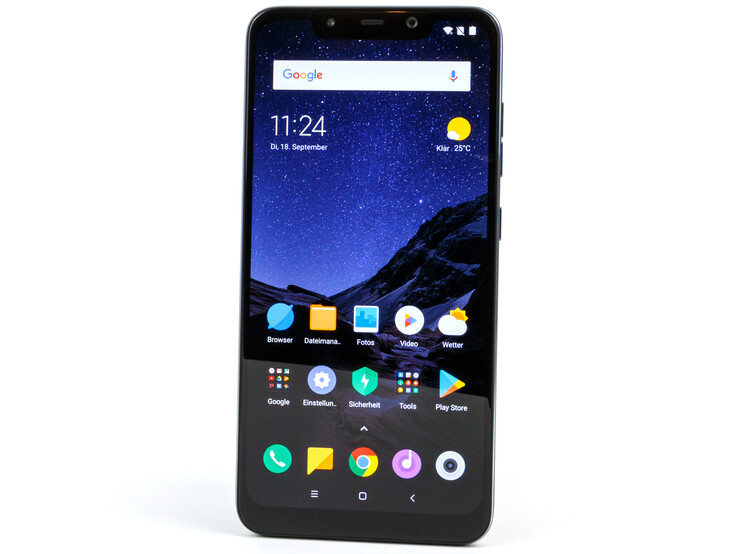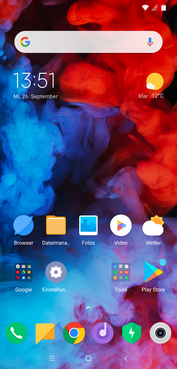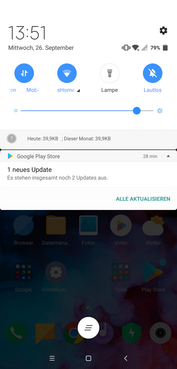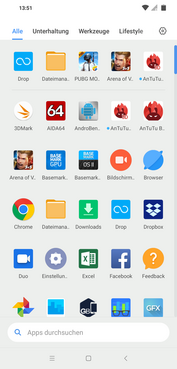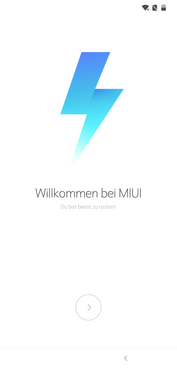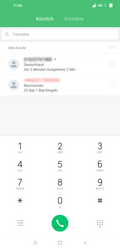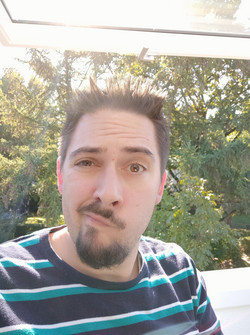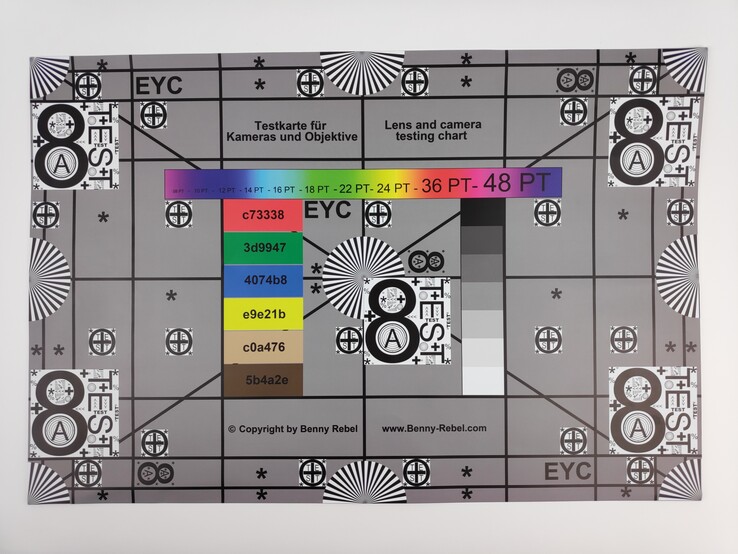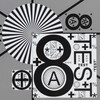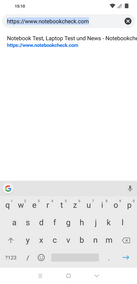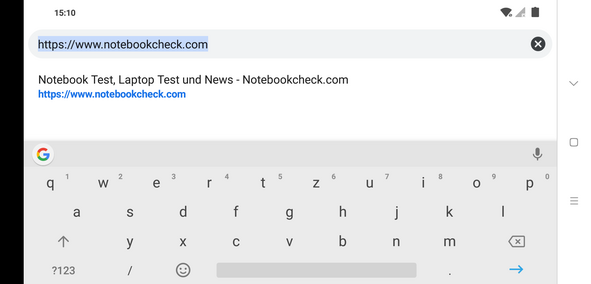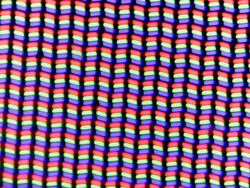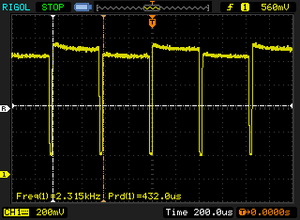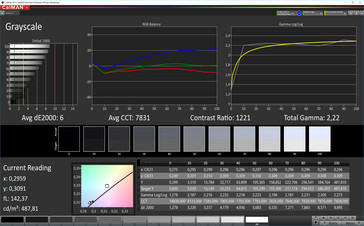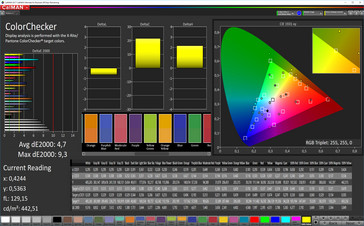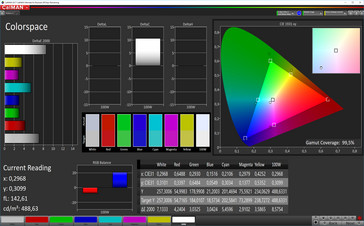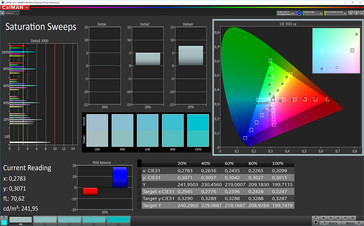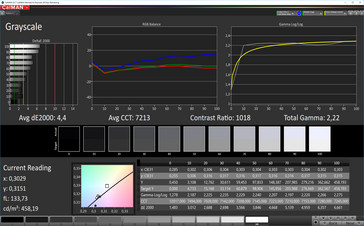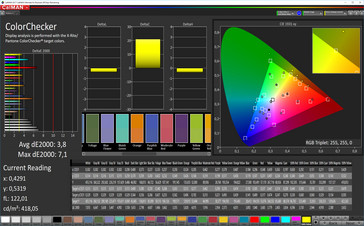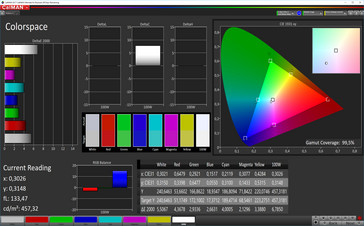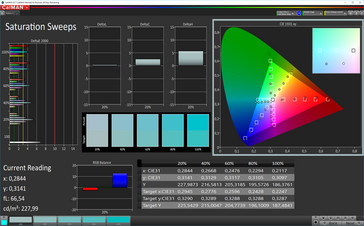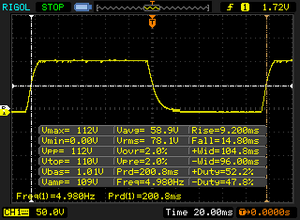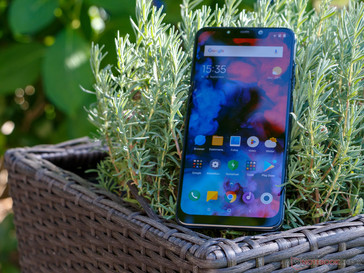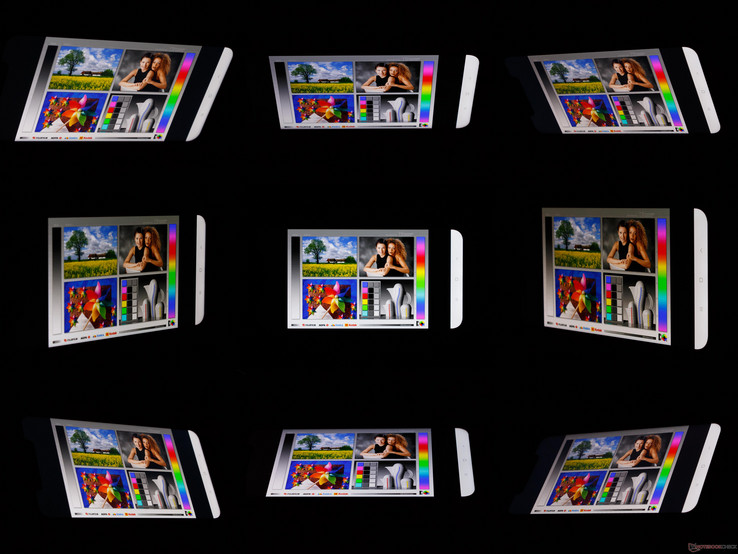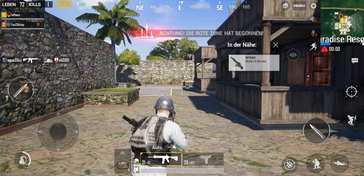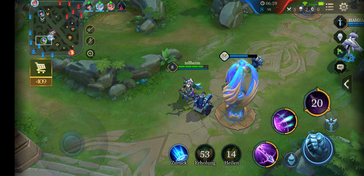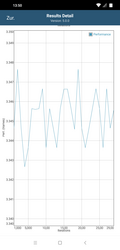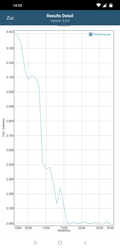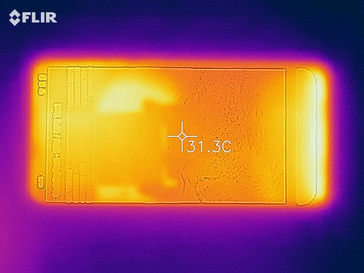Xiaomi Pocophone F1 Smartphone Review
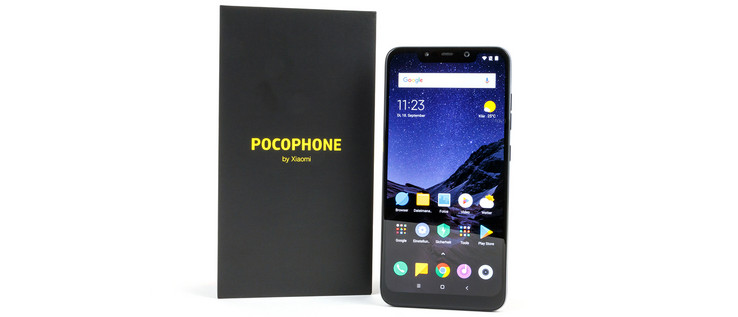
Current flagship smartphones from renowned manufacturers usually cost at least €700 (~$808), while even budget smartphones are starting to increase in price too. There are exceptions to this, like the €399 (~$461) Honor 10 or the €519 (~$599) OnePlus 6, but Xiaomi has gone one better. Its Pocophone F1 costs €349 (~$403), but still packs in some high-end hardware.
The Pocophone has a large 6.18-inch IPS display, a Qualcomm Snapdragon 845 SoC, 6 GB of RAM and 64 GB of UFS 2.1 storage. There is a 128 GB variant too, which costs an additional €40 (~$46). Moreover, the Pocophone has expandable storage, dual rear-facing cameras and a 4,000-mAh battery. Xiaomi has Honor and OnePlus in their sights with the Pocophone as its specifications suggest.
Hence, we have chosen to compare the Pocophone against the Honor 10 and the OnePlus 6. Additionally, we have pitted our test device against other ambitious mid-range smartphones like the Nokia 7 Plus and even flagship devices like the Samsung Galaxy S9+, the Apple iPhone XS, the Huawei P20 Pro and the LG G7 ThinQ.
Case
The Pocophone has a simple case design. The back is made of plastic and the frame of an aluminum alloy. The device comes in a choice of four colors: blue, gray, red and one with a Kevlar back. The Kevlar edition is slightly longer, thicker and five grams (<0.2 oz) heavier than the other variants too.
Our test device is well constructed and there is a plastic frame separating the display from the metal frame for added drop protection. Gaps between materials are precise and tight fitting, albeit it creaks quietly when we apply pressure to the case. Equally, we could create waves on the display by applying firm pressure to the panel.
The card slot sits flush with the frame on the left-hand side of the device and matches its coloring. The Pocophone supports either two nano-SIMs or one SIM and a microSD card. The device has no IP rating so has no certified protection against dust and liquids.
Connectivity
The Pocophone has decent connectivity with Bluetooth 5.0, Wi-Fi Direct, a 3.5 mm jack, a USB Type-C port and an FM Radio. Unfortunately, the device lacks an NFC chip, so you cannot use the Pocophone with Google Pay among other NFC-related services.
The USB Type-C port supports USB 2.0 speeds and USB On-The-Go (OTG) for connecting peripherals. The Pocophone cannot output video to an external monitor over a wired connection though.
Xiaomi does not state a limit to the maximum size microSD card that the Pocophone supports, but we presume that all modern cards will work as our test device recognized our reference SDXC microSD card. The device will only format microSD cards as external memory though and will only store apps on the internal memory by default. This can be changed by activating a setting under Developer Options. The Pocophone also supports microSD cards formatted in exFAT.
The Pocophone also has a notification LED that Xiaomi has placed in the rather unusual location of directly above the USB Type-C port at the bottom of the display. The LED can either flash or light up for new notifications and comes on when the device is charging. The LED can be disabled too.
Software
The Pocophone ships with Android Oreo 8.1, on top of which Xiaomi adds its MIUI skin. MIUI is a highly customized version of Android, of which we have seen plenty in our other Xiaomi reviews like the Mi 8 Explorer Edition or the Mi Pad 4. An update to Android 9.0 Pie is probably currently in development and may be released later this year.
Our test device frequently displays annoying adverts from the numerous Mi-Apps that are pre-installed. You must also create a Mi account and give Xiaomi your mobile phone number to use the device’s Developer Options.
There are other frustrating aspects about the Pocophone’s software too. The device lacks DRM support, so it cannot play HD content on either Amazon Prime Video or Netflix. This cannot be rectified with an update.
Communication & GPS
The Pocophone supports LTE Cat. 16, which allows for up to 1 GBit/s LTE download speeds. Xiaomi has scrimped on frequencies though and uses regional variants. Our test device, for instance, supports all current frequency bands for using the device within Europe, but little outside of that. Likewise, our test device maintained good mobile network coverage throughout testing, but typically one or two reception bars less than the iPhone XS or the Mate 10 Pro.
The device has a MIMO Wi-Fi antenna though, which is a rarity for a device at this price. The MIMO antenna delivers fast, albeit slightly fluctuating, Wi-Fi performance and helped our test device finish on par with our best comparison device in iperf3 Client Wi-Fi tests.
The Pocophone supports all current IEEE 802.11 standards and can connect to either 2.4 GHz or 5 GHz Wi-Fi networks. Our test device maintains good range on either network type.
| Networking | |
| iperf3 transmit AX12 | |
| Sony Xperia XZ2 Premium | |
| Xiaomi Poco F1 | |
| OnePlus 6 | |
| Samsung Galaxy S9 Plus | |
| Honor 10 | |
| iperf3 receive AX12 | |
| Sony Xperia XZ2 Premium | |
| Xiaomi Poco F1 | |
| Samsung Galaxy S9 Plus | |
| OnePlus 6 | |
| Honor 10 | |
The Pocophone uses BeiDou, GLONASS and GPS for location services. Our test device achieves a satellite fix quickly with up to three meters (~9.8 feet) accuracy outdoors and up to four meters (~13 feet) accuracy indoors.
Before taking the Pocophone out on our compulsory bike ride, we had to adjust our test device’s power-saving settings so that our tracking app would record data when running in the background. We compared the Pocophone’s location accuracy against a professional navigation device, the Garmin Edge 500. Our test device recorded the course comparatively well and only deviated by twenty meters (~66 feet) over the 9.5 km (~ 5.9 miles) total distance that the Garmin recorded. Overall, the Pocophone proves a reliable companion that handles navigation tasks well.
Telephone Function & Call Quality
Xiaomi bases its contacts and phone apps on Google’s, but the former lacks the extensive features of the latter. The phone app, for instance, only has options for your contacts and call history with no way to set favorite contacts.
Our test device’s call quality is unconvincing too. Call partners sound clear when making a call with the earpiece, but our voice sounded scratchy and with plenty of unwanted noise. These issues worsen when using the loudspeaker as the microphone fails to pick up our voice if we are further than a foot away from our test device.
We could not determine whether the Pocophone supports Wi-Fi calling, but an update should fix this. The device supports VoLTE, although our test device would only make calls over 3G.
Cameras
The Pocophone has a huge 20 MP front-facing camera that takes good selfies. The default camera app has a multi-level beauty mode and a portrait mode, although the latter struggles in bright ambient light and often illuminates the background too. The front-facing camera can record in up to 1080p; the electronic image stabilization (EIS) is rather weak though.
Xiaomi has also equipped the Pocophone with dual 12 MP and 5 MP rear-facing cameras. The device uses the secondary sensor for depth of field information, but it cannot solely be used to take pictures. The main camera has good technical foundations for taking good photos and delivers, particularly in daylight. Our test device captures objects in a good amount of detail and the backgrounds in bokeh effect shots are pleasingly smooth.
Our test device does well in low light too, as scene 3 demonstrates. The main camera captures plenty of light and image information in dark conditions, but the level of detail predictably reduces compared to photos taken in good light. Overall, low-light shots look better than the Honor 10 and are just short of those that the OnePlus 6 takes. We took our sample photos without AI support as photos have better depth and dynamics to them in our opinion, albeit at the expense of some finer details.
The rear-facing cameras can record video in up to 2,160p at 30 FPS. The Pocophone records videos in stereo sound, but recordings sound comparatively quiet. The rear-facing cameras use EIS for image stabilization, which works well.
We also subjected the Pocophone to further camera tests under controlled lighting conditions. Our test device does a good job at photographing our test chart and captures details well. The degree of detail marginally reduces towards the edge of the image, while dark text against dark backgrounds has only minor fraying and artifacts.
Our test device accurately reproduces colors too, despite being slightly oversaturated compared to the reference color. The white balance is warmer than we would like too.
Accessories & Warranty
Our test device comes with a modular charger, a USB Type-A to Type-C cable, a transparent cover, a SIM tool and a Quick Start Guide. Xiaomi does not currently sell any Pocophone specific accessories, but third-party suppliers do.
The Pocophone comes with twelve months manufacturer’s warranty, which does not affect any third-party supplier warranty. Please see our Guarantees, Return policies and Warranties FAQ for country-specific information.
Input Devices & Operation
The Pocophone has a ten-point multi-touch display that feels good to the touch. Our test device accurately and quickly reacted to inputs throughout testing. Xiaomi pre-installs Google GBoard as the default keyboard, which you could easily replace with others downloadable from the Google Play Store.
The fingerprint sensor is on the back of the device and unlocks our test device quickly. Unlocking the device with the fingerprint sensor takes you straight to the home screen or to the last used app. Additionally, apps can use the fingerprint sensor for biometric authentication or for authorizing payments.
The Pocophone has IR facial recognition technology that is not yet active in all regions at the time of writing. We activated the feature on our test device by changing our device’s region to Spain; you could change the region to any country where Xiaomi has made the system available. The IR scanner works well in the dark, but it is not as reliable as Apple’s Face ID.
Display
The Pocophone has a 6.18-inch IPS display that runs at a 2,226 x 1,080 native resolution in an 18.7:9 aspect ratio. Our test device achieved an average maximum brightness of 486 cd/m² according to X-Rite i1Pro 2, which puts the Pocophone in the middle of our comparison table. Few devices can compete with the LG G7 ThinQ’s insanely bright maximum luminosity, but the Pocophone gets brighter than the OnePlus 6 and the Nokia 7 Plus. By contrast, the Honor 10 and the Galaxy S9+ reach 10% and 17% higher luminosity values respectively. The Pocophone has a 93% uniformly lit display too, which is on par with our best comparison devices.
Our test device uses pulse-width modulation (PWM) to regulate luminosity at and below 20% brightness, which can cause some people to experience dizziness and headaches. We measure the PWM frequency at 2,315 Hz, which is relatively high. However, those who are PWM sensitive may notice the display flickering when using the device at low brightness at night. This is a pity since Xiaomi’s integrated night mode is particularly good and the display reaches a minimum of 1.09 cd/m², a value that is dark enough for comfortably using the device at night.
The Pocophone has a good contrast ratio thanks to its low black value, but it cannot compete with our IPS-equipped comparison devices in this regard. By contrast, the Nokia 7 Plus and the LG G7 ThinQ achieve contrast ratios of 2,082:1 and 1,988:1 respectively, while the Pocophone only has a contrast ratio of 1,438:1.
| |||||||||||||||||||||||||
Brightness Distribution: 93 %
Center on Battery: 489 cd/m²
Contrast: 1438:1 (Black: 0.34 cd/m²)
ΔE ColorChecker Calman: 3.8 | ∀{0.5-29.43 Ø4.77}
ΔE Greyscale Calman: 4.4 | ∀{0.09-98 Ø5}
99.5% sRGB (Calman 2D)
Gamma: 2.22
CCT: 7213 K
| Xiaomi Poco F1 IPS, 2246x1080, 6.2" | Honor 10 IPS, 2280x1080, 5.8" | OnePlus 6 Optic AMOLED, 2280x1080, 6.3" | Nokia 7 Plus IPS, 2160x1080, 6" | Samsung Galaxy S9 Plus Super AMOLED, 2960x1440, 6.2" | LG G7 ThinQ IPS, 3120x1440, 6.1" | |
|---|---|---|---|---|---|---|
| Screen | 9% | 15% | 7% | 27% | 7% | |
| Brightness middle (cd/m²) | 489 | 555 13% | 430 -12% | 458 -6% | 565 16% | 974 99% |
| Brightness (cd/m²) | 486 | 537 10% | 437 -10% | 463 -5% | 571 17% | 975 101% |
| Brightness Distribution (%) | 93 | 94 1% | 87 -6% | 92 -1% | 96 3% | 96 3% |
| Black Level * (cd/m²) | 0.34 | 0.39 -15% | 0.22 35% | 0.49 -44% | ||
| Contrast (:1) | 1438 | 1423 -1% | 2082 45% | 1988 38% | ||
| Colorchecker dE 2000 * | 3.8 | 2.3 39% | 2.3 39% | 4 -5% | 2.3 39% | 5.4 -42% |
| Colorchecker dE 2000 max. * | 7.1 | 6 15% | 4.6 35% | 7.4 -4% | 4.8 32% | 13.1 -85% |
| Greyscale dE 2000 * | 4.4 | 3.9 11% | 2.4 45% | 4.7 -7% | 1.9 57% | 5 -14% |
| Gamma | 2.22 99% | 2.19 100% | 2.28 96% | 2.19 100% | 2.16 102% | 2.31 95% |
| CCT | 7213 90% | 6212 105% | 6160 106% | 7425 88% | 6332 103% | 7480 87% |
* ... smaller is better
Screen Flickering / PWM (Pulse-Width Modulation)
| Screen flickering / PWM detected | 2315 Hz | ≤ 20 % brightness setting | |
The display backlight flickers at 2315 Hz (worst case, e.g., utilizing PWM) Flickering detected at a brightness setting of 20 % and below. There should be no flickering or PWM above this brightness setting. The frequency of 2315 Hz is quite high, so most users sensitive to PWM should not notice any flickering. In comparison: 53 % of all tested devices do not use PWM to dim the display. If PWM was detected, an average of 8081 (minimum: 5 - maximum: 343500) Hz was measured. | |||
We also subjected the Pocophone’s display to analysis with a photo spectrometer and CalMAN software. Our test device uses an extended sRGB color space that struggles with accurately reproducing gray tones. Even the “Warm” profile displays gray tones with a noticeable blue tint to them. The calibration of our test device’s display is passable, but there are visible differences in color and gray tones from the reference color. Cyan and Red tones are poorly calibrated at dE 7 and dE 6.4 respectively, which are considerably higher than the ideal value of 3. In short, our test device has a display that is good enough for daily use, but not one that is noteworthy.
Display Response Times
| ↔ Response Time Black to White | ||
|---|---|---|
| 24 ms ... rise ↗ and fall ↘ combined | ↗ 9.2 ms rise | |
| ↘ 14.8 ms fall | ||
| The screen shows good response rates in our tests, but may be too slow for competitive gamers. In comparison, all tested devices range from 0.1 (minimum) to 240 (maximum) ms. » 53 % of all devices are better. This means that the measured response time is worse than the average of all tested devices (20.2 ms). | ||
| ↔ Response Time 50% Grey to 80% Grey | ||
| 44 ms ... rise ↗ and fall ↘ combined | ↗ 21.6 ms rise | |
| ↘ 22.4 ms fall | ||
| The screen shows slow response rates in our tests and will be unsatisfactory for gamers. In comparison, all tested devices range from 0.165 (minimum) to 636 (maximum) ms. » 73 % of all devices are better. This means that the measured response time is worse than the average of all tested devices (31.6 ms). | ||
The Pocophone is usable outdoors but in limited circumstances. Our test device is bright enough in cloudy weather, but the display becomes difficult to read in direct sunlight because of its relatively low maximum luminosity and glossy finish.
Performance
A Qualcomm Snapdragon 845 SoC powers the Pocophone, which integrates a Qualcomm Adreno 630 GPU. Xiaomi complements the SoC with a generous 6 GB RAM.
Our test device performs slightly above the average of Snapdragon 845 powered devices that we have currently tested in CPU benchmarks and is on par with our comparison devices. The Pocophone performed well in system performance benchmarks too and proved the perfect companion in daily life.
| Lightmark - 1920x1080 1080p (sort by value) | |
| Nokia 7 Plus | |
| Samsung Galaxy S9 Plus | |
| Huawei P20 Pro | |
| Basemark ES 3.1 / Metal - offscreen Overall Score (sort by value) | |
| OnePlus 6 | |
| Nokia 7 Plus | |
| LG G7 ThinQ | |
| Samsung Galaxy S9 Plus | |
| Huawei P20 Pro | |
| Average Qualcomm Snapdragon 845 (1169 - 1201, n=5) | |
| Average of class Smartphone (205 - 7731, n=34, last 2 years) | |
We conducted our browser benchmarking with the pre-installed version 68 of Chrome. Our test device performed admirably, consistently finishing behind only the LG G7 ThinQ and the OnePlus 6. These two devices scored around eight to ten per cent higher than the Pocophone in browser benchmarks, but the difference is not noticeable in daily web browsing.
| JetStream 1.1 - Total Score | |
| LG G7 ThinQ (Chrome 66) | |
| OnePlus 6 (Chrome 66) | |
| Average Qualcomm Snapdragon 845 (22.5 - 90.9, n=25) | |
| Xiaomi Poco F1 (Chrome 68) | |
| Sony Xperia XZ2 Premium (Chrome 68) | |
| Samsung Galaxy S9 Plus (Samsung Browser 7.0) | |
| Huawei P20 Pro (Chrome 65) | |
| Honor 10 (Chrome 66) | |
| Nokia 7 Plus (Chrome 60) | |
| Octane V2 - Total Score | |
| Average of class Smartphone (2228 - 126661, n=194, last 2 years) | |
| OnePlus 6 (Chrome 66) | |
| LG G7 ThinQ (Chrome 66) | |
| Average Qualcomm Snapdragon 845 (3991 - 18275, n=28) | |
| Samsung Galaxy S9 Plus (Samsung Browser 7.0) | |
| Xiaomi Poco F1 (Chrome 68) | |
| Sony Xperia XZ2 Premium (Chrome 68) | |
| Huawei P20 Pro (Chrome 65) | |
| Honor 10 (Chrome 66) | |
| Nokia 7 Plus (Chrome 60) | |
| Mozilla Kraken 1.1 - Total | |
| Nokia 7 Plus (Chrome 60) | |
| Honor 10 (Chrome 66) | |
| Huawei P20 Pro (Chrome 65) | |
| Sony Xperia XZ2 Premium (Chrome 68) | |
| Average Qualcomm Snapdragon 845 (2154 - 11204, n=28) | |
| Xiaomi Poco F1 (Chrome 68) | |
| LG G7 ThinQ (Chrome 66) | |
| OnePlus 6 (Chrome 66) | |
| Samsung Galaxy S9 Plus (Samsung Browser 7.0) | |
| Average of class Smartphone (257 - 28190, n=154, last 2 years) | |
| WebXPRT 2015 - Overall | |
| OnePlus 6 (Chrome 66) | |
| LG G7 ThinQ (Chrome 66) | |
| Average Qualcomm Snapdragon 845 (96 - 291, n=23) | |
| Xiaomi Poco F1 (Chrome 68) | |
| Sony Xperia XZ2 Premium (Chrome 68) | |
| Huawei P20 Pro (Chrome 65) | |
| Honor 10 (Chrome 66) | |
| Nokia 7 Plus (Chrome 60) | |
| Samsung Galaxy S9 Plus (Samsung Browser 7.0) | |
* ... smaller is better
The Pocophone comes with either 64 GB or 128 GB of UFS 2.1 storage. Most of our comparison devices also have UFS 2.1, despite the often vastly different AndroBench 3-5 scores. We attribute these variations to each device’s memory controller among other things. In short, our test device has good internal storage speeds that are a way off our fastest comparison devices.
The microSD card reader is comparatively quick too, which we tested with our Toshiba Exceria Pro M501 reference card. Our test device achieves similar values to that of our fast comparison devices and notably is much faster than the pricier Xperia XZ2 Premium. It is good to see that Xiaomi includes exFAT support too.
| Xiaomi Poco F1 | Nokia 7 Plus | LG G7 ThinQ | Samsung Galaxy S9 Plus | Sony Xperia XZ2 Premium | Honor 10 | OnePlus 6 | Average 64 GB UFS 2.1 Flash | Average of class Smartphone | |
|---|---|---|---|---|---|---|---|---|---|
| AndroBench 3-5 | -12% | 8% | 17% | -7% | 225% | 23% | 69% | 835% | |
| Sequential Read 256KB (MB/s) | 705 | 283.1 -60% | 695 -1% | 819 16% | 749 6% | 828 17% | 726 3% | 696 ? -1% | 2235 ? 217% |
| Sequential Write 256KB (MB/s) | 155.6 | 211.6 36% | 176.4 13% | 204.9 32% | 171 10% | 192.1 23% | 201.4 29% | 224 ? 44% | 1871 ? 1102% |
| Random Read 4KB (MB/s) | 101 | 54.7 -46% | 110.5 9% | 129.7 28% | 136 35% | 145.9 44% | 137 36% | 137.2 ? 36% | 297 ? 194% |
| Random Write 4KB (MB/s) | 17.81 | 19.62 10% | 23.26 31% | 22.74 28% | 21.75 22% | 163 815% | 21.8 22% | 84.7 ? 376% | 343 ? 1826% |
| Sequential Read 256KB SDCard (MB/s) | 85.3 ? | 82.2 -4% | 84.7 ? -1% | 79.2 ? -7% | 34.18 ? -60% | 68.6 ? -20% | |||
| Sequential Write 256KB SDCard (MB/s) | 65.6 ? | 62.3 -5% | 62.7 ? -4% | 67.2 ? 2% | 30.23 ? -54% | 52.2 ? -20% |
Games
The Qualcomm Adreno 630 GPU handles graphics, but the Pocophone cannot match its equivalently equipped competitors. Our test device plays Arena of Valor at a stable 60 FPS even at maximum graphics, just like other Qualcomm Adreno 630 equipped devices. However, PUBG only runs at a maximum of FPS at both maximum and medium graphics, a restriction that has only previously occurred at maximum graphics for other flagship smartphones. Perhaps Xiaomi does not completely trust the Pocophone’s cooling system to run PUBG Mobile at 60 FPS at maximum graphics.
The sensors and touchscreen worked well throughout testing, although we would have liked the speakers to get louder.
PUBG Mobile
Arena of Valor
Emissions
Temperature
The Pocophone has comparatively low surface temperatures even under sustained load. Our test device reaches a maximum of 31 °C (87.8 °F) at idle on one area of the display, but most of the device remains below 30 °C (86 °F). Surface temperatures rise to a maximum of just 35.1 °C (~95.2 °F) under sustained load too, which is barely lukewarm.
Xiaomi advertises the Pocophone as having LiquidCool technology, but this is nothing new. The Lumia 950 XL debuted this form of passive cooling in 2015 with its copper heat pipe. Samsung also used the same technology on their recent Galaxy Note 9. We subjected our test device to thirty GFXBench battery benchmarks on a loop to determine how the SoC managed under sustained load. The Pocophone performed well in the older T-Rex benchmark but struggled in, the more complex Manhattan benchmark where performance dropped by around 40% halfway through the benchmark loop. By contrast, the Xperia XZ2 Premium maintains 50% higher performance in the Manhattan benchmark with the same SoC, hence the Pocophone’s frame rate limitation in PUBG Mobile. In short, the Pocophone’s cooling system cannot handle sustained load.
(+) The maximum temperature on the upper side is 35.1 °C / 95 F, compared to the average of 35.2 °C / 95 F, ranging from 21.9 to 247 °C for the class Smartphone.
(+) The bottom heats up to a maximum of 33.9 °C / 93 F, compared to the average of 34 °C / 93 F
(+) In idle usage, the average temperature for the upper side is 28.6 °C / 83 F, compared to the device average of 32.9 °C / 91 F.
Speakers
The Pocophone has two speakers, one on the bottom of the device and the other in the earpiece. Our test device reaches a maximum volume of 83.4 dB(A), but the sound quality is unbalanced at this volume. Audio sounds best when played at medium volumes where it is relatively pleasing.
By contrast, audio output via the headphone jack is clean with low-noise. Additionally, the Pocophone supports Bluetooth 5.0, LDAC, aptX and aptX HD for great audio output over supported wireless headphones and speakers.
Xiaomi Poco F1 audio analysis
(+) | speakers can play relatively loud (83.4 dB)
Bass 100 - 315 Hz
(-) | nearly no bass - on average 24.4% lower than median
(±) | linearity of bass is average (10.6% delta to prev. frequency)
Mids 400 - 2000 Hz
(±) | higher mids - on average 6.2% higher than median
(±) | linearity of mids is average (10.2% delta to prev. frequency)
Highs 2 - 16 kHz
(±) | higher highs - on average 5.3% higher than median
(+) | highs are linear (5.8% delta to prev. frequency)
Overall 100 - 16.000 Hz
(±) | linearity of overall sound is average (23.9% difference to median)
Compared to same class
» 54% of all tested devices in this class were better, 9% similar, 37% worse
» The best had a delta of 11%, average was 35%, worst was 134%
Compared to all devices tested
» 71% of all tested devices were better, 7% similar, 23% worse
» The best had a delta of 4%, average was 24%, worst was 134%
Sony Xperia XZ2 Premium audio analysis
(+) | speakers can play relatively loud (83.6 dB)
Bass 100 - 315 Hz
(-) | nearly no bass - on average 34.5% lower than median
(±) | linearity of bass is average (9.2% delta to prev. frequency)
Mids 400 - 2000 Hz
(+) | balanced mids - only 4% away from median
(+) | mids are linear (6.3% delta to prev. frequency)
Highs 2 - 16 kHz
(+) | balanced highs - only 3.5% away from median
(+) | highs are linear (3.5% delta to prev. frequency)
Overall 100 - 16.000 Hz
(±) | linearity of overall sound is average (23.9% difference to median)
Compared to same class
» 54% of all tested devices in this class were better, 9% similar, 37% worse
» The best had a delta of 11%, average was 35%, worst was 134%
Compared to all devices tested
» 71% of all tested devices were better, 7% similar, 23% worse
» The best had a delta of 4%, average was 24%, worst was 134%
Battery Life
Power Consumption
Xiaomi has equipped the Pocophone with a 4,000-mAh battery, which the included Quick Charge 3.0 charger recharges fully in less than two hours; the Pocophone does not support wireless charging though.
The Pocophone is a relatively frugal smartphone whose power consumption is slightly higher than the OnePlus 6’s at idle. Overall, our test device consumes less than the average of Snapdragon 845 powered devices that we have tested, particularly its minimum consumption at idle. We would still have liked to see better maximum power consumption at idle though, where our test device is considerably outperformed by the OnePlus 6.
| Off / Standby | |
| Idle | |
| Load |
|
Key:
min: | |
| Xiaomi Poco F1 4000 mAh | Nokia 7 Plus 3800 mAh | Honor 10 3400 mAh | OnePlus 6 3300 mAh | Samsung Galaxy S9 Plus 3500 mAh | Average Qualcomm Snapdragon 845 | Average of class Smartphone | |
|---|---|---|---|---|---|---|---|
| Power Consumption | 3% | -22% | 16% | 26% | -8% | -14% | |
| Idle Minimum * (Watt) | 0.65 | 0.65 -0% | 1.12 -72% | 0.6 8% | 0.68 -5% | 0.862 ? -33% | 0.847 ? -30% |
| Idle Average * (Watt) | 1.97 | 1.76 11% | 2.26 -15% | 1 49% | 0.95 52% | 1.728 ? 12% | 1.446 ? 27% |
| Idle Maximum * (Watt) | 2.01 | 1.78 11% | 2.3 -14% | 1.6 20% | 1.09 46% | 2.07 ? -3% | 1.63 ? 19% |
| Load Average * (Watt) | 4.29 | 4.47 -4% | 5.14 -20% | 4.3 -0% | 4.58 -7% | 4.87 ? -14% | 6.95 ? -62% |
| Load Maximum * (Watt) | 9.05 | 9.13 -1% | 7.89 13% | 8.6 5% | 5.16 43% | 9.27 ? -2% | 11.3 ? -25% |
* ... smaller is better
Battery Life
The Pocophone has good battery life thanks to its large battery. Moreover, our test device achieves outstanding battery life at idle because its display can reach a comparatively low minimum luminosity.
Our more meaningful battery life tests are those where we set all devices to 150 cd/m² luminosity. The Pocophone has considerably better battery life in our H.264 looped video test and our Wi-Fi battery life test than all our comparison devices except for the Huawei P20 Pro. However, the P20 Pro appeared to power throttle significantly during our power consumption tests, so our results are not an accurate reflection of how much the device will consume in daily use.
We should also point out that the Pocophone has aggressive power-saving settings, as mentioned in our Communication & GPS section. The device’s power-saving settings are hidden deep within Settings and often difficult to disable or customize.
| Xiaomi Poco F1 4000 mAh | Honor 10 3400 mAh | OnePlus 6 3300 mAh | Nokia 7 Plus 3800 mAh | LG G7 ThinQ 3000 mAh | Samsung Galaxy S9 Plus 3500 mAh | Huawei P20 Pro 4000 mAh | Sony Xperia XZ2 Premium 3540 mAh | |
|---|---|---|---|---|---|---|---|---|
| Battery runtime | -24% | -6% | -22% | -9% | -23% | 4% | -27% | |
| Reader / Idle (h) | 34.8 | 19.4 -44% | 30.1 -14% | 28.4 -18% | 27.7 -20% | 22.4 -36% | 28.8 -17% | 22.5 -35% |
| H.264 (h) | 15.6 | 11 -29% | 13.2 -15% | 11.8 -24% | 15.1 -3% | 11.2 -28% | 13.1 -16% | 8.7 -44% |
| WiFi v1.3 (h) | 13.5 | 11.1 -18% | 12.7 -6% | 11.2 -17% | 9.9 -27% | 8.7 -36% | 12.4 -8% | 9.1 -33% |
| Load (h) | 3.7 | 3.6 -3% | 4.1 11% | 2.6 -30% | 4.3 16% | 4 8% | 5.8 57% | 3.9 5% |
Pros
Cons
Verdict
Xiaomi has reinvigorated OnePlus’ original concept of creating a flagship smartphone at a bargain price. The Xiaomi Pocophone F1 performed well in practically all our tests, especially regarding battery life, camera quality and performance.
Our test device uses the Snapdragon 845 SoC well, but the Pocophone cannot meet the expectations of its advertised LiquidCool technology. Frustratingly, the OS bombarded us with adverts, while the lack of HD Amazon and Netflix may prove a deal breaker for some.
The Xiaomi Pocophone F1 is great value for money, particularly because of its powerful SoC, impressive battery life and great cameras. You will have to live with some cut corners at this price though.
The Pocophone could have a better-calibrated and brighter display, but Xiaomi had to cut costs somewhere. The display will only be a problem when using the device in direct sunlight. We liked the cameras though. Sure, there are better cameras out there, but not many at this price.
Our test device has other weaknesses too, namely its call quality and network reception, which are worse than the competition. The largely plastic design is simple and stable in our opinion, but this is merely subjective.
The Xiaomi Pocophone F1 is rightly the hot candidate for those who do not want to spend more than €350 (~$404) on a smartphone.
Xiaomi Poco F1
- 11/04/2019 v7 (old)
Daniel Schmidt


